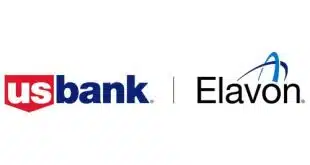Current technology is no longer as effective as it needs to be. Time to start adopting modern methods—including blockchain.
IN 2021, business-to-business payments-market revenue was valued at $903 billion and is projected to reach $1.618 trillion by 2028. While these payments are an important service provided by community banks, existing B2B payments technology is not keeping up with customer expectations and innovation from fintechs.
This is due to the many challenges associated with B2B payments: cost, speed, security, flexibility, conditional payment triggers dependent on the delivery of goods, and the ability to match the paperwork.
To start, B2B payments tend to be larger than consumer payments and often require supporting documents before a payment can be made, such as a payment order, invoice, and proof of delivery. As a result, additional scrutiny is necessary when comparing documents and amounts. Customers challenge the costs when the amounts do not match the payor/recipient’s expectations. Adding to the paperwork, 40% of B2B payments are still made through paper checks.
For community banks, a failure to streamline the payment process can lead to mistakes, delays, and more costs. But how can the process be improved when the solutions provided by traditional core-technology providers servicing community banks fall short?
Resolving B2B payments challenges is one of the leading reasons why community bank-driven venture-capital groups are pooling their resources to fund the technology development needed to address the issue.
Here’s a rundown on the common issues with current B2B payment processes:
Payment Delays
The most common challenge for B2B payments is timing delays, often due to mail slowdowns and mistakes in the manual-entry process when sending or receiving checks.
As a result of these problems, a bank’s client may be late in making its payments, requiring notice, potential late fees, and sometimes a service halt. This type of friction in the process can be incredibly frustrating for banks’ customers and their clients and can detract from the value banks are supposed to provide.
In the interim, banks can help businesses mitigate this risk and hassle by ensuring clients know exactly how much they will be billed and, when possible, using electronic invoicing processes. Businesses can automate the delivery of invoices to clients and ensure they receive the correct documentation immediately. Often, this can be achieved by integrating accounting software with community banks’ bill-payment services.
Payment Methods
Sometimes, the method by which payments are made or received can also create significant problems. For instance, if a business client pays by check or money order, it can take additional time for the payment to be cleared, adding to an already lengthy process. Also, payments platforms might not allow a business to accept the preferred payment method used by its clients.
For the time being, banks that offer embedded, electronic payment solutions and adopt mobile-payment options can mitigate this issue.
Miscommunication and Isolation
B2B payments involve multiple internal and external teams to handle several processes before the payment can be made. As a result, a lack of external or internal communication can impact a payment’s timing and success. Also, miscommunication between the two parties can make things fall through at the last minute, resulting in delays and potentially impacting a business’s bottom line.
Problems With Security
B2B payments represent a massive volume of data, as well as large transaction amounts, compared to the consumer segment. Thus, security is a major concern for B2B customers, as they have their own and their customers’ data to protect and are subject to greater liability in the event of a security breach.
With the proliferation of data breaches in recent years, businesses are more mindful of protecting their data on all fronts, and bank-account data is some of the most sensitive out there. Therefore, the bank is responsible for guaranteeing its security through the processes and checkpoints it adopts as part of the payment process.
Blockchain, though still in the early stages of adoption, can provide a highly secure network to store transaction data along with payments through distributed ledger technology. The information sent through blockchain is encrypted, making it more difficult for outside parties to gain access.
Inherently, blockchain technology limits the amount of information obtained in a breach, making it harder to obtain large amounts of data with one hack. It also provides a more transparent record of data, helping to ensure nothing is changed without proper notification and creating a consistent source of truth and accuracy that other databases struggle to maintain.
Solutions on the Horizon
In the next few years, we expect most payments to move into the FedNow real-time payments program or onto new technology rails provided by fintech vendors, including private-permission digital ledgers, blockchain, or stablecoin platforms.
The better news is that B2B payment platforms have recently been developed at a fraction of the cost and time big banks are spending to develop the technology internally. Community banks can catch up by evaluating and adopting newer platforms and integrating them into their customers’ accounting/ERP solutions.
We also see adoption of more payment-management platforms, which serve as a central hub for all processes to increase visibility. This allows everyone to see who is responsible for what tasks, what conditions need to be met before payment, when payments are due, and the terms of such payment.
Ultimately, alignment between all parties is the key to a streamlined B2B payment process, and using a common payment platform is the best way to ensure this happens. Private, permissioned ledgers using blockchain technologies can provide these types of payment platforms. Examples of young but proven companies that deliver innovative B2B payment solutions and payment platforms are Tassat and Figure.
As business customers continue to shift toward digital solutions versus manual processes for banking, community banks must invest in solutions to meet their customers’ needs while considering the current issues holding them back.
Technology companies are rapidly building applications for smaller banks, and technology consortiums are being formed specifically to aggregate the resources for community banks. The result is that B2B payment technologies—including blockchain applications—are being developed in trade finance, mortgage warehouse lending, securitization trusts, loan servicing, and logistics business sectors.
—Mike Sekits is a co-founder and managing director of Btech Consortium and Strandview Capital.





